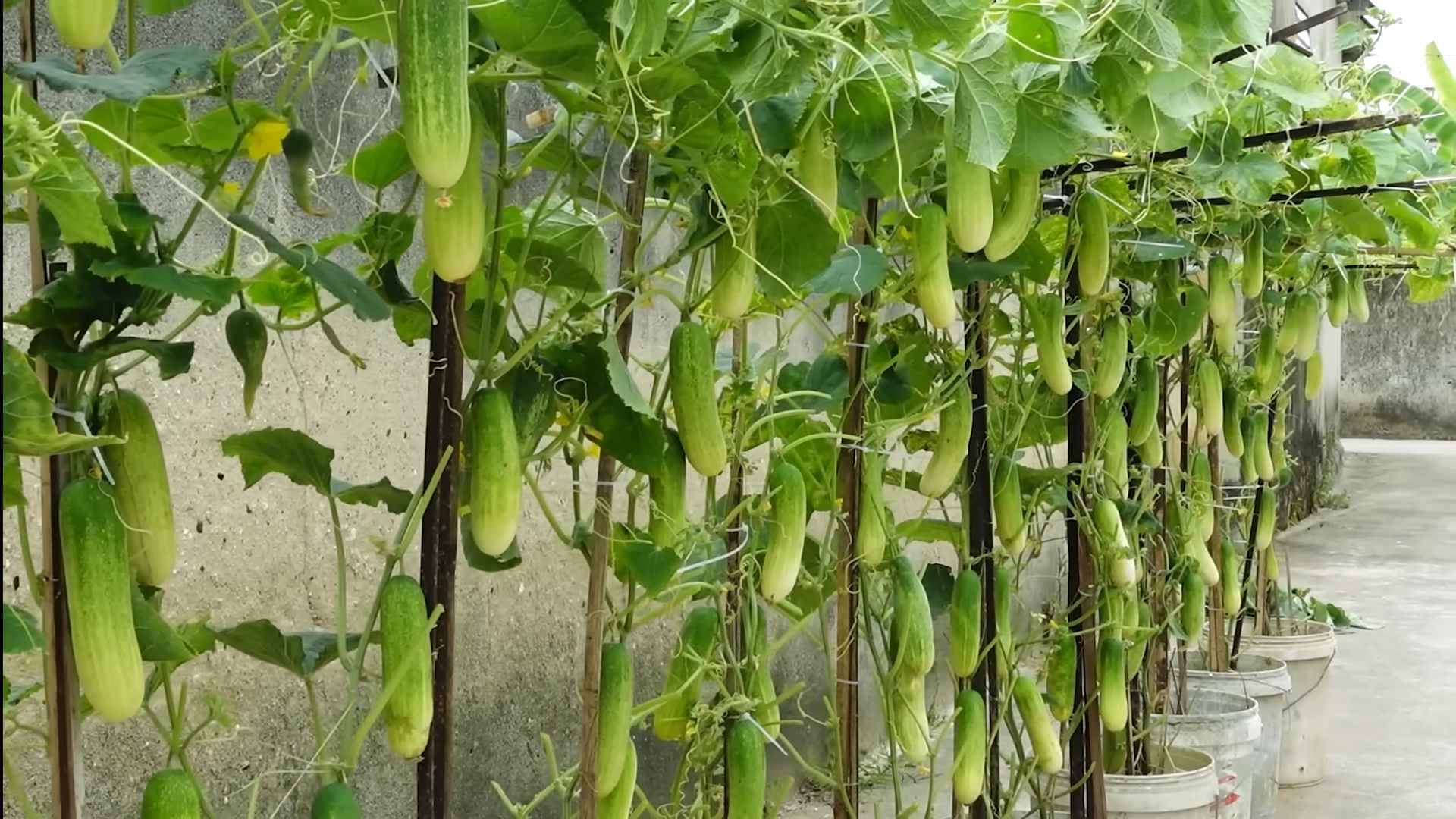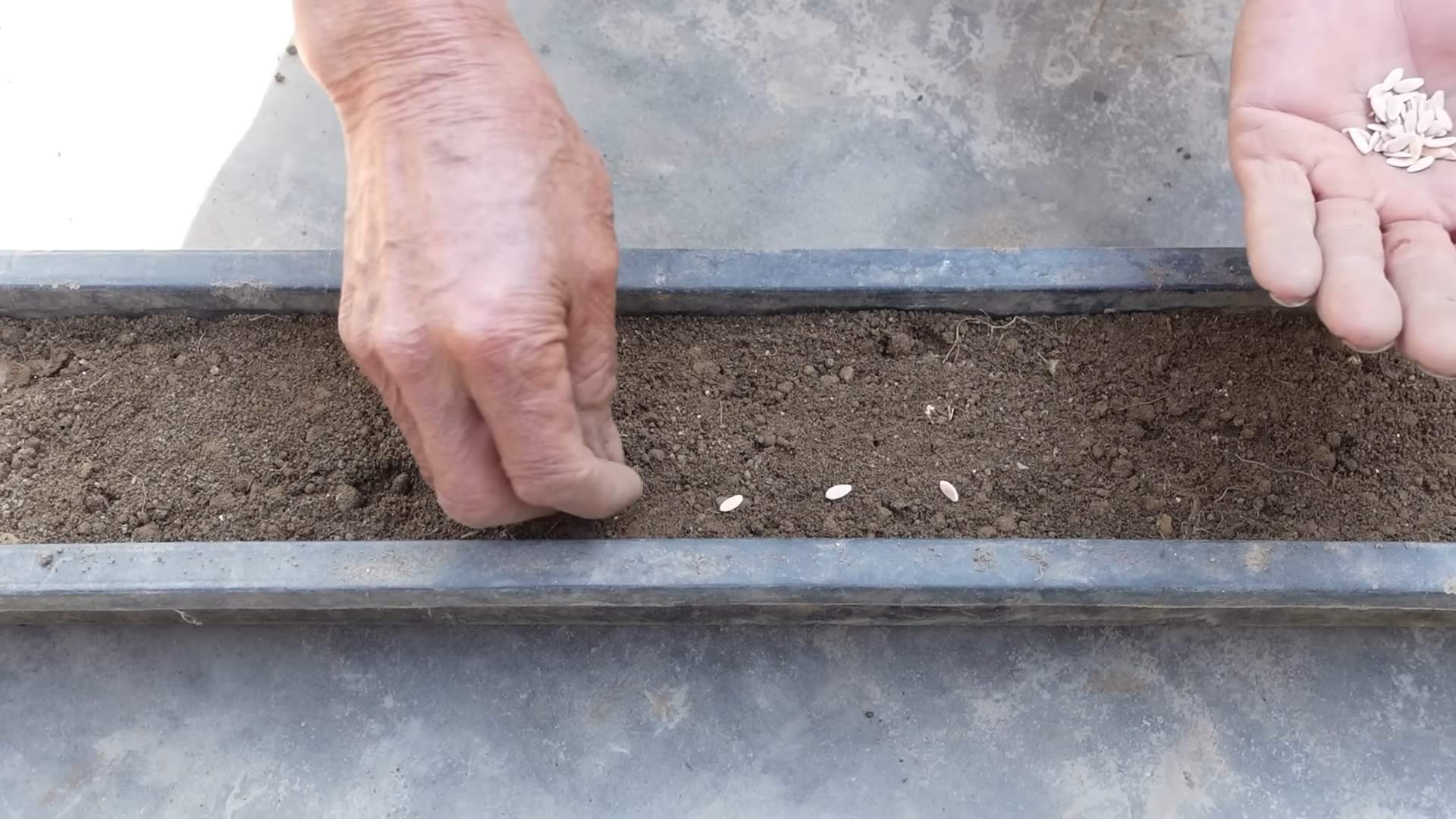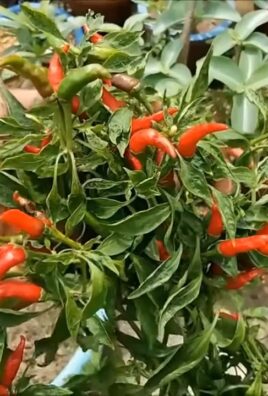Grow high yield cucumbers and transform your garden into a thriving oasis! Imagine biting into a crisp, juicy cucumber, bursting with flavor, knowing you nurtured it from seed to table. That’s the magic of home gardening, and it’s more achievable than you might think. For centuries, cucumbers have been cultivated across the globe, from their origins in India to their adoption by ancient Greeks and Romans, who prized them for their refreshing qualities. Today, they remain a staple in salads, pickles, and countless other dishes.
But let’s face it, sometimes getting those cucumbers to actually grow can feel like a battle. Maybe you’re struggling with small yields, or perhaps your cucumbers are bitter or misshapen. I’ve been there! That’s why I’m so excited to share these simple yet effective DIY tricks and hacks that will help you grow high yield cucumbers, even if you’re a beginner gardener. These aren’t just random tips; they’re tried-and-true methods that I’ve personally used to maximize my cucumber harvest. Get ready to unlock the secrets to abundant, delicious cucumbers right in your own backyard!

DIY: Unleash Cucumber Kingdom – Grow a Bumper Crop!
Hey there, fellow garden enthusiasts! Are you dreaming of crisp, refreshing cucumbers straight from your backyard? Well, you’ve come to the right place! I’m going to walk you through my tried-and-true method for growing a cucumber crop that will have you swimming in salads and pickling like a pro. Get ready to transform your garden into a cucumber paradise!
Choosing the Right Cucumber Variety
Before we even think about soil, let’s talk cucumbers. Not all cucumbers are created equal, and choosing the right variety is crucial for success. Here’s a quick rundown:
* Slicing Cucumbers: These are your classic salad cucumbers, typically long, smooth-skinned, and mild in flavor. Think ‘Marketmore 76’ or ‘Straight Eight’.
* Pickling Cucumbers: Shorter, stubbier, and often with bumpy skin, these are perfect for turning into delicious pickles. ‘National Pickling’ and ‘Boston Pickling’ are popular choices.
* Burpless Cucumbers: These varieties are bred to be low in cucurbitacin, the compound that can sometimes cause bitterness and, well, burps! ‘Sweet Success’ and ‘Armenian’ are great options.
* Bush Cucumbers: If you’re short on space, bush varieties are your best friend. They grow in a compact form, making them ideal for containers or small gardens. ‘Spacemaster’ and ‘Bush Champion’ are worth checking out.
I personally love growing ‘Marketmore 76’ for salads and ‘National Pickling’ for, you guessed it, pickles! Consider your space, your taste preferences, and your intended use when making your selection.
Preparing the Soil: The Foundation for Success
Cucumbers are hungry plants, so rich, well-drained soil is essential. Here’s how I prepare my cucumber patch:
* Sunlight: Cucumbers need at least 6-8 hours of direct sunlight per day. Choose a sunny spot in your garden.
* Soil Testing: A soil test can tell you the pH and nutrient levels of your soil. Cucumbers prefer a slightly acidic to neutral pH (6.0-7.0). You can get a soil test kit at most garden centers.
* Amendment Time: Amend your soil with plenty of organic matter, such as compost, well-rotted manure, or leaf mold. This will improve drainage, water retention, and nutrient availability. I usually add a generous layer (2-3 inches) of compost to my cucumber bed.
* Fertilizing: Incorporate a balanced fertilizer into the soil before planting. Look for a fertilizer with an NPK ratio (nitrogen, phosphorus, potassium) of around 10-10-10. Follow the instructions on the fertilizer package.
Starting Seeds Indoors (Optional but Recommended)
While you can direct sow cucumber seeds, starting them indoors gives them a head start and protects them from pests and diseases. Here’s my indoor seed-starting process:
1. Timing: Start your seeds about 3-4 weeks before the last expected frost in your area.
2. Containers: Use small pots or seed trays filled with seed-starting mix. I like to use peat pots because they can be planted directly into the ground, minimizing root disturbance.
3. Sowing: Sow 2-3 seeds per pot, about ½ inch deep.
4. Watering: Water gently to moisten the soil. Avoid overwatering, which can lead to damping off (a fungal disease that kills seedlings).
5. Warmth: Place the pots in a warm location (around 70-80°F). A heat mat can be helpful.
6. Light: Once the seeds germinate, provide plenty of light. A sunny windowsill or grow lights will work.
7. Thinning: Once the seedlings have their first true leaves (the second set of leaves), thin them to one plant per pot. Choose the strongest, healthiest seedling.
8. Hardening Off: Before transplanting your seedlings outdoors, you need to harden them off. This means gradually exposing them to outdoor conditions over a period of 7-10 days. Start by placing them in a sheltered location for a few hours each day, gradually increasing the amount of time they spend outdoors.
Planting Your Cucumbers: Giving Them a Home
Whether you started your seeds indoors or are direct sowing, here’s how to plant your cucumbers:
1. Timing: Wait until the soil has warmed up to at least 60°F and all danger of frost has passed.
2. Spacing: Space your plants according to the variety. Slicing and pickling cucumbers typically need 12-18 inches between plants, while bush varieties can be planted closer together.
3. Planting Depth: Plant your seedlings at the same depth they were growing in their pots. If direct sowing, plant the seeds about ½ inch deep.
4. Watering: Water thoroughly after planting.
5. Mulching: Apply a layer of mulch around your plants to help retain moisture, suppress weeds, and regulate soil temperature. I like to use straw or shredded leaves.
Supporting Your Cucumbers: Trellising for Success
Cucumbers are natural climbers, and trellising them offers several benefits:
* Improved Air Circulation: Trellising allows for better air circulation, which helps prevent fungal diseases.
* Increased Sunlight Exposure: Trellised cucumbers receive more sunlight, leading to higher yields.
* Easier Harvesting: Harvesting cucumbers from a trellis is much easier than bending over to pick them from the ground.
* Space Saving: Trellising saves space in your garden.
Here are a few trellising options:
* A-Frame Trellis: This is a simple and sturdy option that you can easily build yourself.
* Vertical Trellis: A vertical trellis can be made from netting, wire mesh, or even bamboo poles.
* Tomato Cages: Tomato cages can also be used to support bush cucumber varieties.
I personally prefer using an A-frame trellis. It’s easy to build and provides plenty of support for my cucumber plants.
Watering and Fertilizing: Keeping Them Happy and Healthy
Cucumbers need consistent watering, especially during hot, dry weather. Here’s my watering and fertilizing routine:
* Watering: Water deeply and regularly, aiming for about 1 inch of water per week. Avoid overhead watering, which can promote fungal diseases. Drip irrigation or soaker hoses are ideal.
* Fertilizing: Fertilize your cucumbers every 2-3 weeks with a balanced fertilizer. You can also use a liquid fertilizer, such as fish emulsion or seaweed extract.
Pest and Disease Control: Protecting Your Crop
Cucumbers are susceptible to a few pests and diseases. Here’s how I deal with them:
* Cucumber Beetles: These pesky beetles can damage leaves and spread diseases. Handpick them off the plants or use insecticidal soap.
* Squash Bugs: Squash bugs can also damage cucumber plants. Handpick them off the plants or use insecticidal soap.
* Powdery Mildew: This fungal disease causes a white, powdery coating on the leaves. Improve air circulation, avoid overhead watering, and use a fungicide if necessary.
* Downy Mildew: This fungal disease causes yellow spots on the leaves. Improve air circulation, avoid overhead watering, and use a fungicide if necessary.
I always try to use organic pest and disease control methods whenever possible. Neem oil is a great option for controlling many common garden pests.
Harvesting Your Cucumbers: The Sweet Reward
The moment you’ve been waiting for! Here’s how to harvest your cucumbers:
* Timing: Harvest your cucumbers when they are the desired size and color. Slicing cucumbers are typically harvested when they are 6-8 inches long, while pickling cucumbers are harvested when they are 3-4 inches long.
* Method: Use a sharp knife or pruners to cut the cucumbers from the vine. Avoid pulling them off, as this can damage the plant.
* Frequency: Harvest your cucumbers regularly to encourage continued production.
I love the feeling of harvesting a basket full of fresh, homegrown cucumbers! It’s the ultimate reward for all your hard work.
Extending the Harvest: Keeping the Cucumbers Coming
Want to keep the cucumber harvest going for as long as possible? Here are a few tips:
* Succession Planting: Plant new cucumber seeds or seedlings every 2-3 weeks to ensure a continuous harvest.
* Deadheading: Remove any yellowing or diseased leaves to keep the plants healthy and productive.
* Watering and Fertilizing: Continue to water and fertilize your plants regularly.
With a little care and attention, you can enjoy a bountiful cucumber harvest all season long! Now go forth and grow some amazing cucumbers!

Conclusion
So, there you have it! Growing high yield cucumbers doesn’t have to be a pipe dream relegated to expert gardeners. With this simple, yet incredibly effective DIY trick, you can transform your cucumber patch into a veritable harvest haven. We’ve walked you through the process, highlighting the benefits of vertical growing and strategic pruning, and hopefully demystified the process of achieving a bumper crop.
Why is this a must-try? Because it’s a game-changer. It’s not just about getting *some* cucumbers; it’s about maximizing your yield, minimizing disease, and making the most of your garden space. Imagine baskets overflowing with crisp, juicy cucumbers, ready for salads, pickles, or a refreshing summer snack. This DIY method empowers you to achieve that vision, regardless of your garden size or experience level.
But don’t stop there! Experimentation is key to unlocking your garden’s full potential. Consider these variations to tailor the technique to your specific needs and preferences:
* Companion Planting: Enhance your cucumber’s growth by planting beneficial companions like marigolds (to deter pests) or dill (to attract pollinators).
* Different Trellis Designs: While we’ve focused on a simple trellis, feel free to explore other options like A-frames, netting, or even repurposed materials like old ladders.
* Varietal Selection: Not all cucumbers are created equal. Research different varieties to find those best suited to your climate and taste preferences. Bush varieties can also be trained to grow vertically, though they may require more support.
* Fertilizer Adjustments: Monitor your plants closely and adjust your fertilizer regimen as needed. A balanced fertilizer with slightly higher phosphorus content can encourage fruit production.
This DIY trick for growing high yield cucumbers is more than just a gardening technique; it’s an investment in your garden’s productivity and your own enjoyment. It’s about taking control of your harvest and experiencing the satisfaction of growing your own delicious, healthy food.
We wholeheartedly encourage you to give this method a try. Don’t be intimidated by the prospect of pruning or trellising. It’s easier than you think, and the rewards are well worth the effort. And most importantly, we want to hear about your experiences! Share your successes, your challenges, and any variations you’ve tried in the comments below. Let’s build a community of cucumber-growing enthusiasts and learn from each other. Your insights could be invaluable to other gardeners embarking on this journey. So, grab your seeds, build your trellis, and get ready for a cucumber harvest like never before! Let’s get growing!
Frequently Asked Questions (FAQ)
What type of cucumbers are best suited for vertical growing?
Most cucumber varieties can be grown vertically, but vining types like slicing cucumbers (e.g., Marketmore, Straight Eight) and pickling cucumbers (e.g., National Pickling, Bush Pickle) are particularly well-suited. These varieties naturally produce long vines that readily climb trellises. Bush varieties can also be grown vertically, but they may require more support and careful training. Consider your local climate and growing conditions when selecting a variety.
How often should I water my vertically grown cucumbers?
Vertically grown cucumbers tend to dry out faster than those grown on the ground, especially in hot weather. Water deeply and regularly, aiming to keep the soil consistently moist but not waterlogged. Check the soil moisture daily, and water when the top inch feels dry. Mulching around the base of the plants can help retain moisture. Drip irrigation or soaker hoses are excellent options for providing consistent and efficient watering.
What type of fertilizer should I use for my cucumbers?
Cucumbers are heavy feeders and benefit from regular fertilization. Use a balanced fertilizer (e.g., 10-10-10) at planting time, and then side-dress with a fertilizer higher in phosphorus (e.g., 5-10-5) every 2-3 weeks to encourage fruit production. Organic options like compost tea or fish emulsion are also excellent choices. Avoid over-fertilizing, as this can lead to excessive foliage growth at the expense of fruit production.
How do I prune my cucumber plants for optimal yield?
Pruning is crucial for maximizing yield in vertically grown cucumbers. Remove suckers (small shoots that grow from the base of the plant) to encourage the plant to focus its energy on the main vine and fruit production. Also, remove any yellowing or diseased leaves to improve air circulation and prevent the spread of disease. Some gardeners also prune the tips of the vines once they reach the top of the trellis to encourage lateral branching and more fruit.
What are common pests and diseases that affect cucumbers, and how can I prevent them?
Common cucumber pests include aphids, cucumber beetles, and squash bugs. Diseases include powdery mildew, downy mildew, and bacterial wilt. Preventative measures include:
* Crop Rotation: Avoid planting cucumbers in the same location year after year.
* Good Air Circulation: Space plants adequately and prune regularly to improve airflow.
* Watering Practices: Water at the base of the plants to avoid wetting the foliage, which can promote fungal diseases.
* Insecticidal Soap or Neem Oil: Use these organic options to control pests.
* Disease-Resistant Varieties: Choose cucumber varieties that are resistant to common diseases.
* Regular Inspection: Check your plants regularly for signs of pests or diseases and take action promptly.
How do I know when my cucumbers are ready to harvest?
Cucumber maturity depends on the variety. Generally, cucumbers are ready to harvest when they are firm, have a deep green color, and reach the desired size for their variety. Overripe cucumbers will turn yellow and become seedy. Harvest regularly to encourage continued fruit production. Use a sharp knife or pruners to cut the cucumbers from the vine, leaving a small stem attached.
Can I grow cucumbers in containers using this vertical growing method?
Yes, you can absolutely grow cucumbers in containers using this vertical growing method. Choose a large container (at least 10 gallons) with good drainage. Use a high-quality potting mix and provide a sturdy trellis for the vines to climb. Container-grown cucumbers may require more frequent watering and fertilization than those grown in the ground.
What if my cucumber plant isn’t producing any fruit?
There are several reasons why your cucumber plant might not be producing fruit:
* Lack of Pollination: Cucumbers require pollination to set fruit. If you’re growing cucumbers indoors or in an area with limited pollinators, you may need to hand-pollinate the flowers.
* Nutrient Deficiency: Ensure your plants are receiving adequate nutrients, especially phosphorus.
* Stress: Stressful conditions like extreme heat, drought, or pest infestations can inhibit fruit production.
* Variety: Some cucumber varieties are parthenocarpic, meaning they don’t require pollination to set fruit. If you’re having trouble with pollination, consider growing a parthenocarpic variety.
* Male Flowers: Cucumber plants produce both male and female flowers. The female flowers have a small cucumber behind them. If you only see male flowers, be patient; the female flowers will eventually appear.
How can I improve the flavor of my homegrown cucumbers?
The flavor of your homegrown cucumbers can be influenced by several factors:
* Variety: Some varieties are naturally sweeter and less bitter than others.
* Watering: Consistent watering is essential for preventing bitterness.
* Harvesting: Harvest cucumbers when they are at their peak ripeness. Overripe cucumbers can become bitter.
* Soil Quality: Healthy soil contributes to better-tasting cucumbers. Amend your soil with compost or other organic matter.
* Sunlight: Cucumbers need at least 6-8 hours of sunlight per day to develop their best flavor.
By addressing these factors, you can significantly improve the flavor of your homegrown cucumbers and enjoy a truly delicious harvest.





Leave a Comment